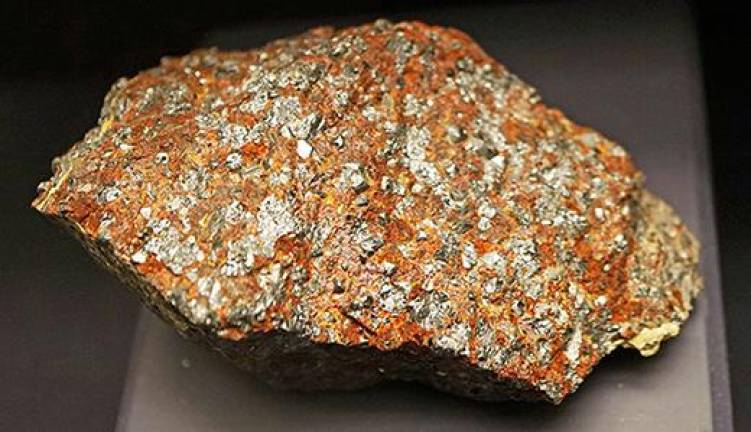Franklinite declared state’s official mineral
NEW JERSEY. Gov. Phil Murphy says legislation will ensure that Franklinite’s legacy is remembered statewide.

Franklinite became the official mineral of New Jersey when Gov. Phil Murphy signed legislation designating it so Wednesday, July 19.
“By designating Franklinite as the official state mineral, we celebrate yet another quintessentially Jersey piece of history,” he said. “Franklinite quite literally helped build our modernizing nation’s foundation while fueling the growth of the railroad industry and New Jersey’s local economies.
“This legislation will ensure that Franklinite’s enduring economic and cultural legacy is remembered not just in Sussex County but across the Garden State.”
The legislation was sponsored by state Sens. Steven Oroho and Edward Durr and Assemblymen Parker Space, Hal Wirths and Kevin Rooney. Oroho, Space and Wirths represent the 24th District, which includes all of Sussex County.
“The Murphy administration’s recognition of Franklinite as the New Jersey state mineral underscores the worldwide renown and critical role that Franklinite has had in the industrial history of our state,” said state geologist Jeff Hoffman.
“The largest deposit of Franklinite in the world is in the ore bodies that supplied the Franklin Mine and Sterling Hill Mine in Sussex County. Zinc from these mines supported many uses and was crucial to early industrial development in New Jersey.
“Moreover, these mines were the largest supplier of zinc during World War II, providing the raw materials needed for weapons that helped protect our country and troops.”
Oroho said, “Franklinite represents an important part of New Jersey’s history for the role it played in helping to industrialize our state. Found exclusively in the United States in the communities of Franklin and Ogdensburg, Franklinite is a critical link to our state’s mineral mining heritage and its designation as New Jersey’s official state mineral is most appropriate.”
Space pointed out that Franklinite is as unique to New Jersey as the Pine Barrens are. “The discovery and mining of this rare ore built Franklin. Its importance can’t be overstated.”
Wirths credited many people for helping to get this bill to the governor’s desk.
“Jeff Osowski of the Sterling Hill Mining Museum built the momentum for this years ago; Bill Truran took a keen interest in organizing support when he became the Sussex County historian in 2019; and all the students in northern New Jersey who kept writing letters to get this bill through the legislative process and now signed into law. This is a great day for everyone involved.”
William Kroth, president and executive director of the Sterling Hill Mining Museum, said the museum has been working for years to gain recognition for Franklinite as the state mineral.
“It was one of the driving forces in the economic development of Sussex County in the 1800s. After the Franklinite ore was processed to remove the zinc, it then became the source of high manganese steel, which was vital for the railroad industry.
“Franklinite is found nowhere else in the world in as great a quantity as in New Jersey. The Sterling Hill Mining Museum, a 501(c)(3) educational institution, is looking forward to building on this recognition in its outreach to students.”
The largest deposit of Franklinite in the world is in the ore bodies that supplied the Franklin Mine and Sterling Hill Mine in Sussex County. Zinc from these mines supported many uses and was crucial to early industrial development in New Jersey. Moreover, these mines were the largest supplier of zinc during World War II, providing the raw materials needed for weapons that helped protect our country and troops.” - Jeff Hoffman, state geologist

